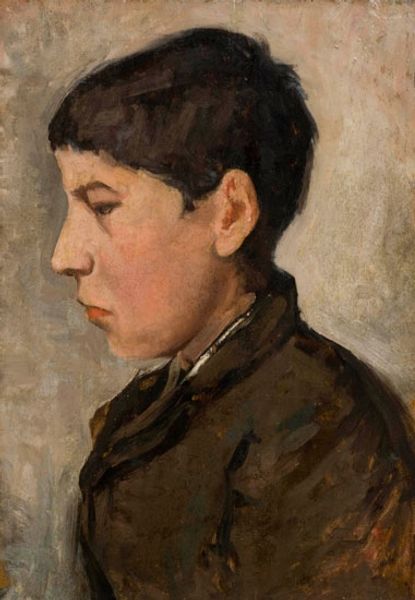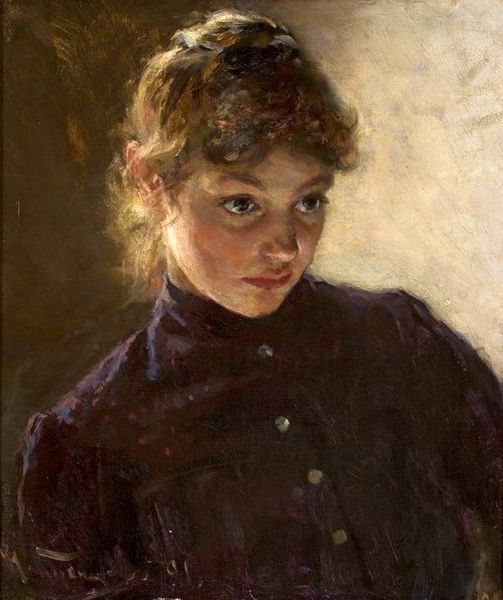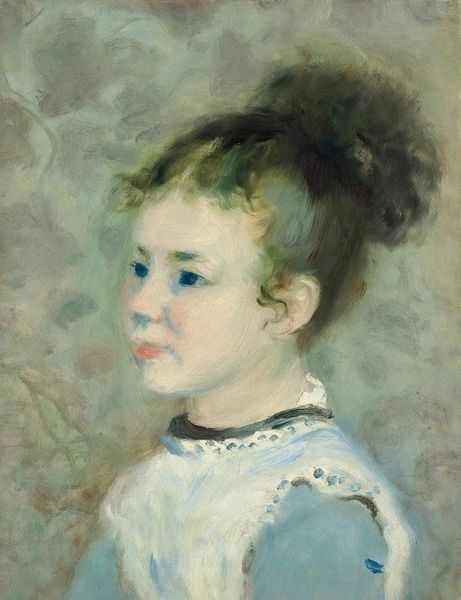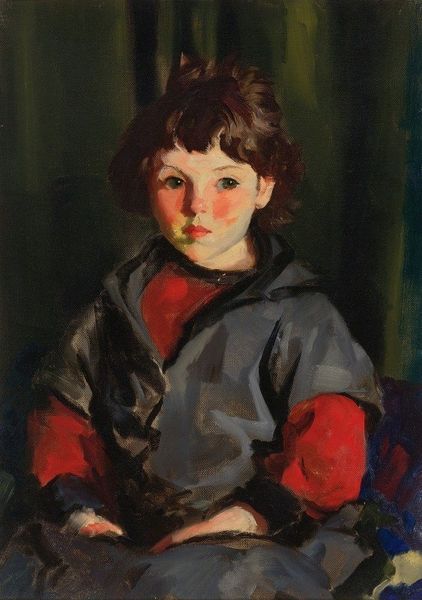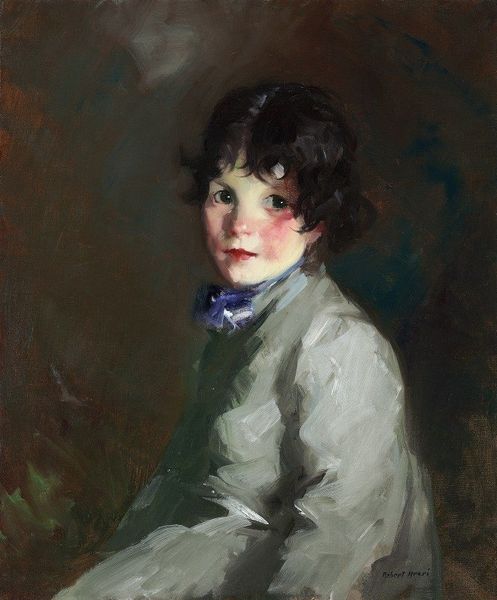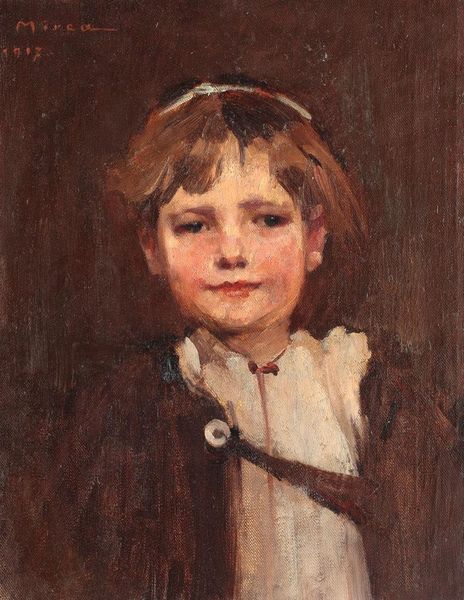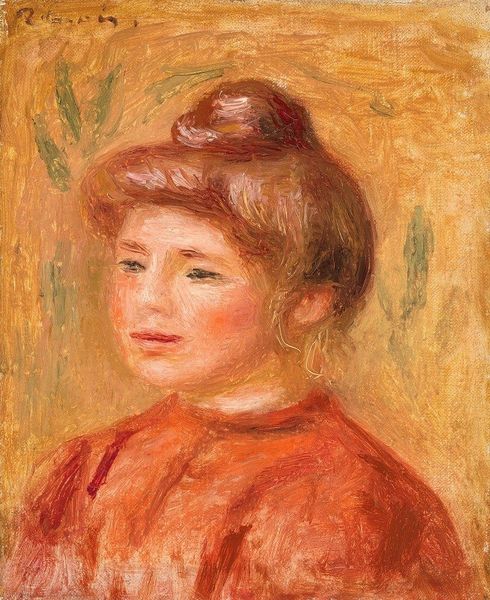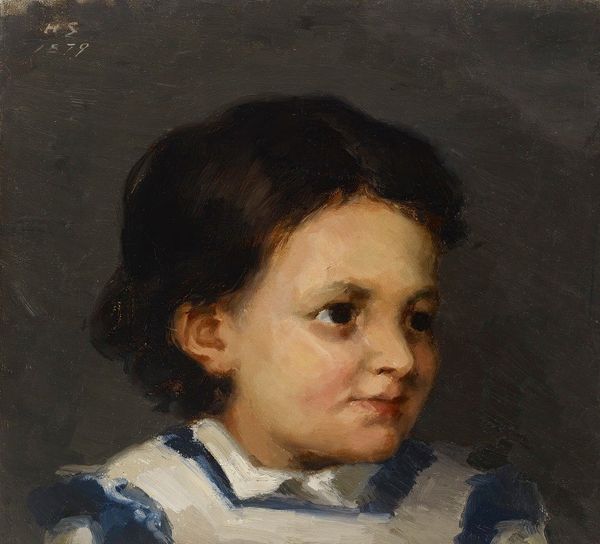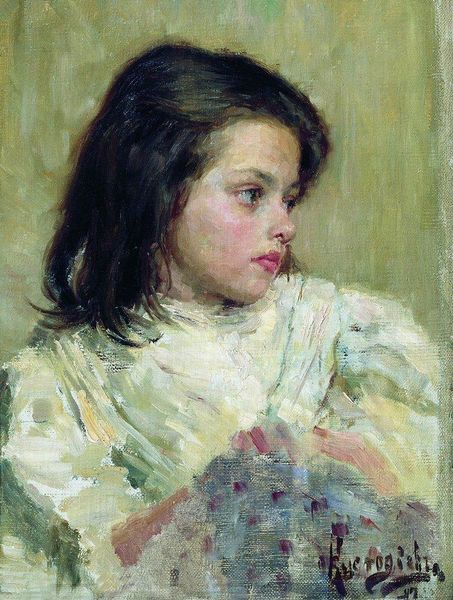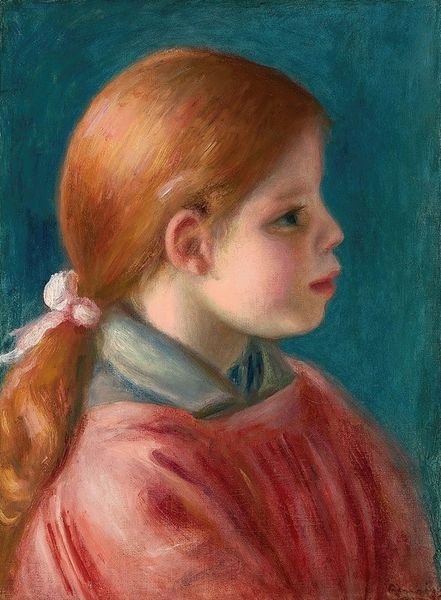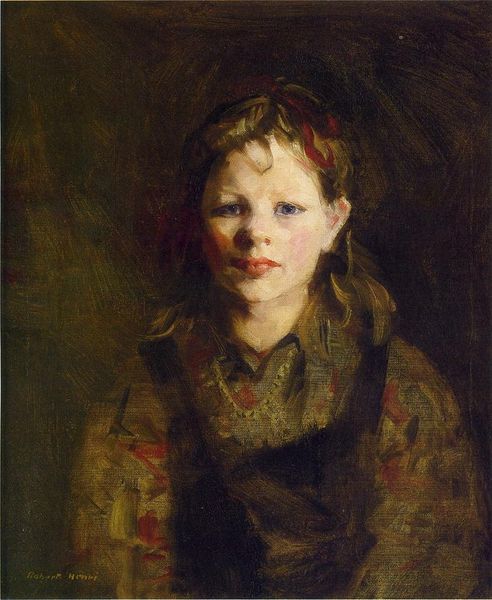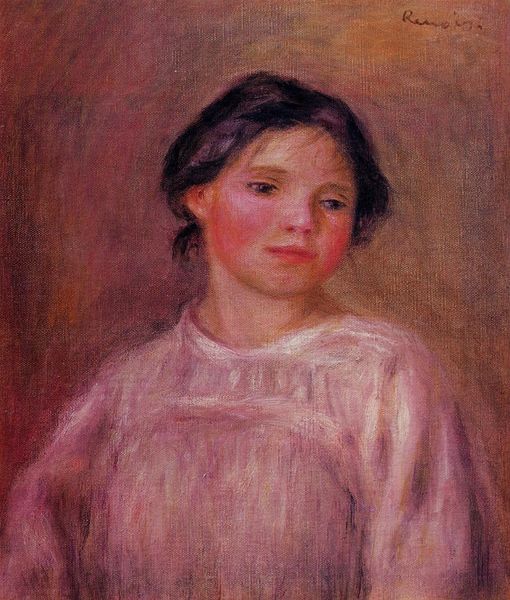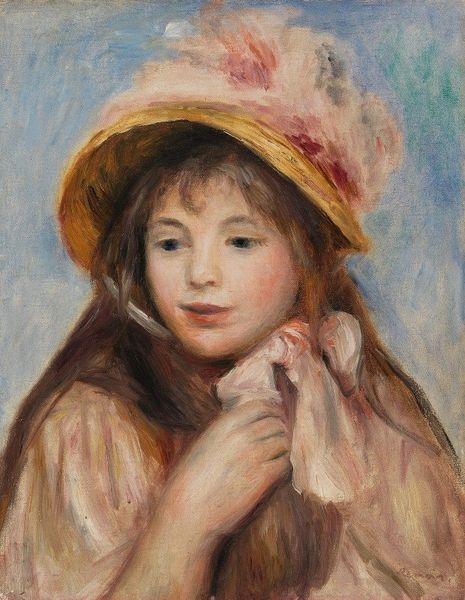
oil-paint, impasto
#
portrait
#
figurative
#
oil-paint
#
oil painting
#
impasto
#
romanticism
#
portrait art
Copyright: Public Domain: Artvee
Editor: Here we have Ramón Casas’s portrait "Niña," an oil painting rendered with visible impasto. The brushstrokes seem quite rapid, capturing a fleeting moment. What can you tell me about it? Curator: Well, let’s think about what goes into producing an image like this. Look at the impasto—the thick application of oil paint. Where did that paint come from? Who ground the pigments, manufactured the brushes, prepared the canvas? These are not neutral materials; they are the products of specific labor conditions and industrial processes. Editor: That's a perspective I hadn't fully considered. So, you're saying the materials themselves have a story to tell about the art? Curator: Exactly! This portrait exists not just as an isolated image, but also as the endpoint of a complex material supply chain. Was Casas using commercially produced paints or did he commission them from an apothecary? And consider his status as a painter. He's portraying a child, and the consumption of that image likely belonged to a certain social class. The child's simple clothing suggests perhaps a working class family, but who ultimately would have owned this piece? Editor: That makes me wonder about the act of painting itself – the physical labor involved. Was painting considered “work” in the same way manual labor was? Curator: That's the tension, isn’t it? High art versus craft, intellectual work versus physical work. Casas's rapid brushstrokes could be interpreted as a kind of performance, obscuring the labor involved, romanticizing the process, while still relying entirely on the materials that other people provided through the expenditure of physical labour. Editor: So, by looking at the materials and production, we get a much richer understanding. Thanks for pointing that out. Curator: Absolutely! Considering the social and economic forces behind every brushstroke completely reshapes how we view art.
Comments
No comments
Be the first to comment and join the conversation on the ultimate creative platform.
